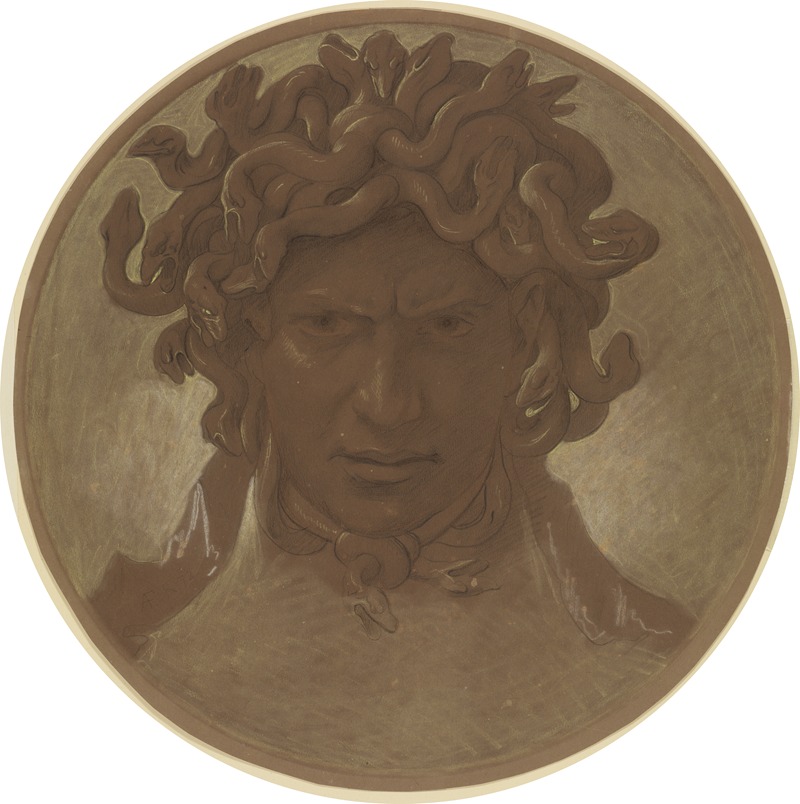
Medusenhaupt
A hand-painted replica of Anselm Feuerbach’s masterpiece Medusenhaupt, meticulously crafted by professional artists to capture the true essence of the original. Each piece is created with museum-quality canvas and rare mineral pigments, carefully painted by experienced artists with delicate brushstrokes and rich, layered colors to perfectly recreate the texture of the original artwork. Unlike machine-printed reproductions, this hand-painted version brings the painting to life, infused with the artist’s emotions and skill in every stroke. Whether for personal collection or home decoration, it instantly elevates the artistic atmosphere of any space.
Anselm Feuerbach was a prominent 19th-century German painter, known for his classical style and historical themes. Among his notable works is "Medusenhaupt," which translates to "Head of Medusa." This painting is a significant piece within Feuerbach's oeuvre, reflecting his interest in mythological subjects and his mastery of the academic style that characterized much of his work.
Feuerbach was born in 1829 in Speyer, Germany, and he was part of a family with a strong intellectual background. His father was a well-known archaeologist, which likely influenced Feuerbach's interest in classical antiquity. He studied art in various European cities, including Düsseldorf, Munich, and Paris, where he was exposed to the works of the Old Masters and contemporary artists. This diverse education helped him develop a style that combined classical themes with a modern sensibility.
"Medusenhaupt" is a depiction of the mythological figure Medusa, a Gorgon from Greek mythology who was often portrayed as a winged female creature with snakes for hair. According to the myth, anyone who looked directly at her would turn to stone. Medusa's image has been a popular subject in art for centuries, symbolizing both beauty and horror.
Feuerbach's interpretation of Medusa is notable for its focus on the emotional and psychological aspects of the character. Unlike some representations that emphasize the monstrous elements of Medusa, Feuerbach's painting captures a sense of melancholy and introspection. This approach aligns with the broader Romantic movement in art, which sought to explore the deeper emotional and psychological dimensions of its subjects.
The painting is executed with a high level of technical skill, characteristic of Feuerbach's work. His use of color, light, and composition demonstrates his academic training and his ability to convey complex emotions through visual means. The subdued palette and careful attention to detail in "Medusenhaupt" create a haunting and memorable image that invites viewers to contemplate the dual nature of Medusa as both a victim and a monster.
Feuerbach's "Medusenhaupt" reflects his broader artistic goals of merging classical themes with contemporary ideas. Throughout his career, he sought to create works that were both timeless and relevant to his own era. His paintings often feature figures from mythology and history, rendered with a sense of dignity and gravitas that speaks to his admiration for the art of the past.
Anselm Feuerbach's contribution to 19th-century art is significant, and "Medusenhaupt" is a testament to his skill and vision as an artist. The painting remains an important example of how classical mythology can be reinterpreted through the lens of modern sensibilities, offering insights into the enduring power of these ancient stories. While Feuerbach may not be as widely known today as some of his contemporaries, his work continues to be appreciated for its beauty, technical excellence, and emotional depth.

















